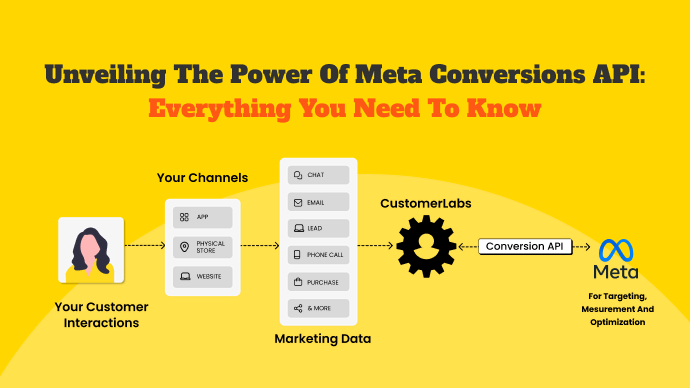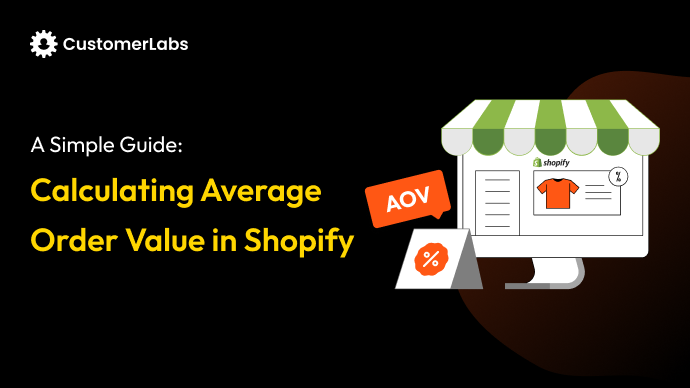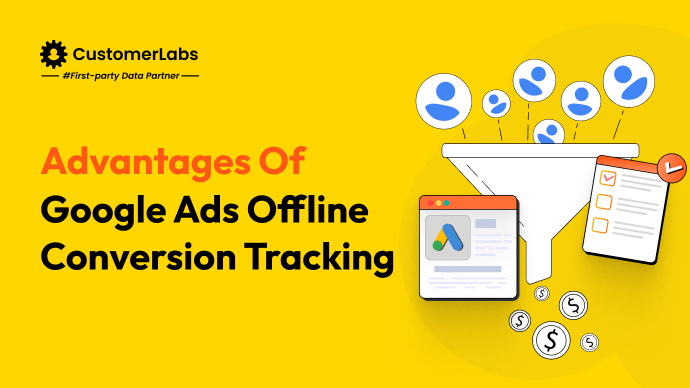Since the iOS 14 update, we have seen the same pattern over and over again. Campaigns that rely only on the Pixel lose attribution, miss retargeting windows, and see their ROAS stall. If you’re frustrated with your Meta ad performance, it’s probably not your creative or your audience; it’s your tracking setup.
This guide breaks down the difference between Facebook Pixel and Conversions API, two essential Meta tracking tools. You’ll see how to combine them for stronger attribution, better optimization, and full-funnel visibility. This blog covers:
- How each connection works
- What they solve (and what they don’t)
- How to avoid common tracking mistakes
- An easy way out: how a brand fixed tracking and improved its event match quality score.
Let’s start with what most marketers know and where it’s falling short.
Meta Pixel vs Conversions API: Definitions and Their Origin
What is Meta Pixel?
The Meta Pixel (formerly Facebook Pixel) is a small piece of code you add to your website. It tracks user actions like page views, add-to-cart, and purchases by firing events from the user’s browser back to Meta.
What is Facebook Conversions API (CAPI)?
Facebook Conversions API (CAPI) is a server-side connection. Instead of relying on the browser, it sends events directly from your website’s backend or your CRM to Meta’s servers.
Sounds too technical, right?
In simple terms, imagine a shopper clicks your Meta ad and buys from your site.
If you’re using only Meta Pixel, their browser sends the purchase info, but it can get blocked by iOS restrictions, ad blockers, or cookie limitations.
But with Conversions API, your server sends that same data straight to Meta, bypassing browser issues.
Meta Pixel listens through the browser. CAPI speaks from your server
Let’s rewind a bit and see why Meta did what it did.
Brief History: Why Did Meta Introduce CAPI?
Originally, the Pixel was enough for tracking the events without any interruption or data loss. But as privacy rules tightened (GDPR, CCPA, HIPAA) and browsers like Safari and Firefox started blocking cookies, the Pixel lost visibility.
Then iOS 14 made it even harder to track users reliably. So Meta introduced CAPI to help advertisers keep their tracking accurate, even when browser-based methods fail.
Pixel’s Original Use Cases and Strengths
- Easy to install, just copy and paste
- Great for tracking top-of-funnel actions (like page views)
- Works well when cookies aren’t blocked
CAPI’s Purpose in a Privacy-Restricted Ecosystem
- Bypasses browser restrictions and ad blockers
- Captures more complete data, including post-purchase events
- Helps maintain compliance with privacy laws
The Shift: Browser-Based to Server-Based Tracking
We’re moving from a world where everything was tracked in the browser (client-side) to one where the server (backend) plays a bigger role. That’s why both tools now coexist in Meta’s tracking stack.
How Each Works: Meta Pixel vs Conversions API
How Meta Pixel Works (Client-Side Tracking)
The Meta Pixel is a piece of JavaScript code that you embed on your website, typically in the <head> section.
When a user visits your website, here’s what happens behind the scenes:
1. Browser Loads the Pixel Script:
When the page loads, the browser downloads and executes the Pixel JavaScript from Meta’s CDN.
2. Event Firing on User Actions:
As users perform actions (like view content, add to cart, initiate checkout), the website triggers fbq() functions — like:
fbq('track', 'AddToCart', {value: 49.99, currency: 'USD'});3. Data Sent via HTTP Requests:
These events are sent as GET requests or POST requests from the user’s browser to Meta’s endpoint (https://www.facebook.com/tr/). The data includes:
- Event name (e.g., AddToCart, Purchase)
- Event time
- Browser details (user agent, referrer)
- Cookies (like _fbp and fr)
- URL and page metadata
4. Cookies Store User Identity:
The Pixel sets or reads the _fbp cookie to assign a unique browser identifier. If the user has logged in to Facebook on the same browser, Meta can associate the event with their account using the fr cookie.
Browser Limitations:
- If third-party cookies are blocked, _fbp might not persist.
- If JavaScript is disabled or interrupted, events won’t fire.
- iOS users who opt out of tracking in the App Tracking Transparency prompt won’t allow meaningful attribution via browser
How CAPI Works (Server-Side Tracking)
The Conversions API (CAPI) works independently of the browser. Instead of sending data from the client (browser), your server or backend system makes a direct HTTP POST request to Meta’s endpoint.
Here’s the technical workflow:
- Event Captured Server-Side:
Your backend or CRM captures an event like a successful checkout or lead form submission.
Structured Data Sent via API:
You send a JSON payload containing the event details:
{
"event_name": "Purchase",
"event_time": 1722900815,
"user_data": {
"em": "[email protected]",
"ph": "hashed_phone_number"
},
"custom_data": {
"currency": "USD",
"value": 49.99
},
"event_source_url": "https://yourstore.com/thank-you"
}- User Identity Is Hashed:
To comply with privacy standards, all personally identifiable information (PII) such as email or phone, is SHA-256 hashed before being sent.
- Meta Matches Server Data with User Profiles:
Meta attempts to match this server-side event to a user using the provided hashed identifiers, IP address, user agent (if included), and timestamp.
- Event Deduplication with Event ID:
If you’re also using Pixel, you can include a unique event_id in both Pixel and CAPI calls. Meta uses this to deduplicate events so the same action isn’t counted twice.
Now that you’ve seen how Meta Pixel and Conversions API work, let’s break down the practical difference: what data each method captures.
What Each Method Captures
| Metric | Meta Pixel | Conversions API |
| Event Source | User’s browser (client-side) | Your server/backend (server-side) |
| Basic events (Page view, Add-to-cart, Purchase) | ✅ Yes | ✅ Yes |
| Rich data (User ID, Email, LTV, etc.) | ❌ Limited | ✅ Supported |
| Impacted by ad blockers/cookie loss | ❌ Yes | ✅ No |
| Tracks even if browser fails to fire | ❌ No | ✅ Yes |

Common Mistakes That Kill Your Meta Tracking and How to Avoid Them
- Missing deduplication keys: If you don’t set up deduplication, you might double-count or drop events when using both Pixel and CAPI.
- Under-sending or over-sending events: Sending too few events means lost data; too many can confuse Meta’s algorithms.
- Not passing user identifiers: Without user IDs or emails, Meta can’t match events to users, hurting optimization.
- No consent logic: If you’re not handling user consent, you risk legal trouble in GDPR, CCPA, and HIPAA regions.
Note: If you are looking for a new health & wellness restriction of Meta – Read this
Avoiding common tracking mistakes is crucial for reliable data.
Why Meta Says – Pixel + CAPI Will Be a Game Changer
Source: Meta’s official release
- Meta wants you to use both Pixel and CAPI together.
- This combo gives you more accurate tracking.
- You’ll miss fewer conversions and events.
- It helps Meta understand your full customer journey.
- Better data = better ad performance and results.
Using Pixel and CAPI together gives you strong tracking, but Meta didn’t stop there. Advanced CAPI takes it even further, unlocking deeper insights and stronger signal quality.
What is Advanced CAPI, and How Does It Work?
Advanced CAPI takes things a step further:
- Tracks standard and custom events: Not just purchases, but also post-purchase, upsells, and more.
- Improves Event Match Quality (EMQ): By sending more user data (like email, phone), you help Meta match events to users.
- Captures post-purchase and LTV behavior: See what customers do after buying, not just the initial sale.
- Tracks both logged-in and guest users: No gaps in your data.
- Solves for browser and iOS signal loss: Server-side events aren’t blocked by browsers or iOS.
No developer required: Platforms like CustomerLabs make setup code-free.
If you still think you need to switch to Advanced CAPI, then read this
How to Connect Your Data to Meta’s CAPI Without Writing a Line of Code
Setting up Facebook Conversions API with CustomerLabs is quick and doesn’t need a developer:
- Connect your website or store and install the CustomerLabs script.
- Link your Meta Pixel, enable server-side tracking, and select key events (like purchases or add-to-cart).
- CustomerLabs handles deduplication using event IDs and passes rich user data to boost event match quality.
- Built-in consent logic and real-time syncing mean you get accurate, compliant tracking with no coding needed.
Case Study: MNMLST Uses Advanced CAPI to Go Beyond Attribution and Into Growth
MNMLST, a high-end DTC watch brand, faced a challenge familiar to many:
- performance volatility on Meta,
- rising acquisition costs,
- lack of visibility into what was working.
Their target audience is largely male, high-intent buyers, meaning every missed signal came at a high cost. Initially relying on Shopify’s built-in Conversions API, the brand struggled with limited event matching and poor signal quality. ROAS stagnated. Retargeting windows shrank and optimization suffered.
That changed when MNMLST shifted to an Advanced CAPI setup with CustomerLabs. Rather than tracking generic “Purchase” events, they implemented custom conversion events segmented by AOV tiers, gender-specific campaigns, and product categories.
Each campaign was structured to function like its own micro-algorithm trained on the exact outcome MNMLST wanted to scale. This wasn’t just better tracking; it was better personalization, better feedback loops, and smarter optimization.
The impact?
- A 117% increase in revenue after ditching the default CAPI setup.
- Better retargeting for high-intent shoppers.
- More relevant post-purchase journeys that drove upsells and repeat purchases.
- Improvement in Event Match Quality (EMQ).
Advanced CAPI didn’t just improve attribution. It gave MNMLST the power to track deeper, segment smarter, and grow faster, proving that real performance comes when tracking isn’t limited to one tool but unified across the stack.
Conclusion
Pixel alone won’t get you where you need to go in 2025. CAPI gives you accuracy, signal strength, and compliance, especially when paired with the Pixel. With CustomerLabs, you get the hybrid setup, clean data, and full control, without needing a developer.
It’s not just about better tracking. It’s about activating the right data at the right time.







